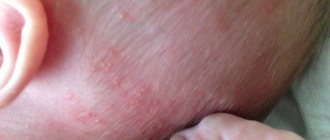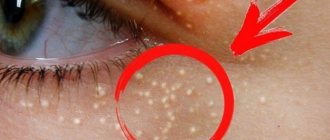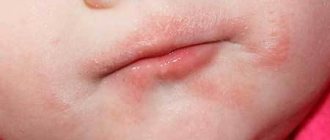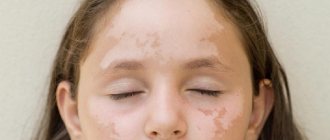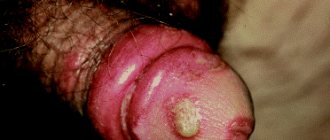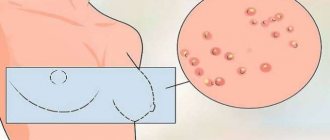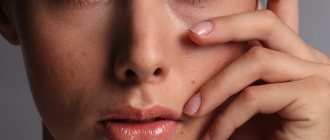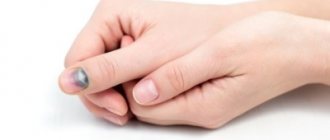If a child has itching in the anus, parents need to pay close attention to this. The cause of discomfort can be many pathologies and diseases that require different treatments. Trying to make a diagnosis yourself can lead to disastrous consequences. Let's figure out why children experience irritation in the butt, what needs to be done when it is detected, and how the treatment is carried out.
Itching in the anus in a child causes great discomfort, so it is necessary to identify its causes and eliminate them
What does diaper rash on the butt look like?
Diaper rash is a limited inflammation of the skin caused by prolonged contact with irritating substances. The dermatological problem occurs in most infants. Most often, lesions occur in skin folds that are not hidden by a diaper. Constant friction of the skin against the edges of the diaper leads to mechanical damage and irritation of the epidermis.
Absolutely all parents experience diaper rash in infants. But the severity of symptoms depends on the extent of skin damage. In newborns, the protective layer of skin is loose and thin. Even short contact with the irritant leads to hyperemia (redness).
In 90% of cases, diaper rash on a baby’s bottom affects the inguinal-femoral or intergluteal areas. Typical manifestations of the disease include:
- erythema (redness) of the skin;
- surface cracks;
- bleeding ulcerations;
- gray plaque on wounds;
- putrid smell.
If treatment is not done in a timely manner, ulcers form on the buttocks. This indicates an infectious inflammation of the soft tissues.
Red rashes in the area in contact with the diaper indicate that you need to change the brand or even temporarily switch to cloth diapers.
Ignoring the problem leads to inflammation becoming chronic.
Symptoms and treatment of thrush of the anus, anus, anus
Have you been fighting thrush for many years without success?
Head of the Institute: “You will be amazed at how easy it is to cure thrush by taking it every day.
A frequent companion when the intestinal tract is affected by Candida fungi is anal thrush. Like all its varieties, it can appear under certain conditions. Patients with helminthic infestations (mainly pinworms), fissures of the rectum and anus suffer from the disease. Often, microtraumas received from anal sex or poor hygiene lead to the growth of fungus in the anal area. Perianal candidiasis may have a number of other predisposing factors:
- Physiological deficiency of immunity (premature babies, pregnant women, frequent stress);
- Hereditary immunity disorder;
- Oncological diseases (especially during chemotherapy);
- Autoimmune diseases (lupus, rheumatoid arthritis, bronchial asthma). The risk of anal candidiasis increases with intensive hormonal therapy;
- Organ transplantation while taking drugs that suppress the immune system;
- Endocrine pathologies;
- Diseases leading to depletion of the body;
- Conditions after severe injuries and burns;
- Long-term treatment with antibiotics;
- AIDS;
- Malnutrition.
Symptoms of the disease
Typically, anal candidiasis occurs in two main forms - as a consequence of intestinal thrush or as dermatitis. But a combined clinical picture of the disease is also possible. If anal thrush is a consequence of intestinal candida infection, then all clinical symptoms will resemble proctitis. The patient complains of nagging pain in a segment of the colon, which worsens during bowel movements. Thrush in the anus in this form may be accompanied by painful tenesmus and bloody or mucous impurities in the stool. Candidiasis of the perianal area can be severe, as candida grows into the intestinal wall and spreads to other tissues, affecting the anus. Typically, this condition may be preceded by a persistent immune disorder.
Our readers successfully use Candiston to treat thrush. Seeing how popular this product is, we decided to bring it to your attention. Read more here...
If candidiasis of the anus passes without affecting the intestines, then all the symptoms may resemble dermatitis. In the acute form of the disease, patients mainly complain of constant itching, which can be a sign of many pathologies. Candidiasis of the anus leads to hyperemia and looseness of the anal area. During examination, you can see traces of scratching or microtrauma. A barely noticeable white coating appears around the anus. This is usually how primary anal thrush begins.
Treatment of anal thrush
In order to determine whether there is thrush around the anus, examinations are carried out. The main detection method is a smear. Patients with persistent forms of the disease are offered an HIV test. Once the cause is determined, treatment for anal candidiasis begins. If the intestines are damaged, systemic antimycotic drugs are prescribed. As a rule, medications are selected after a sensitivity test. The use of local remedies in this case plays the role of auxiliary therapy. They are necessary to cure candidiasis around the anus. Ointments are usually prescribed: Clotrimazole, Candide, Pimafucin.
If the patient has primary candidiasis of the anus, treatment is easier. Local medications are prescribed: Clotrimazole, Nizoral, Exoderil. In the acute form, applications with antifungal medications are effective. In addition to antimycotic treatment, measures are taken to eliminate the factors that caused anal candidiasis. For treatment of thrush in the anus to be effective, consultation with the following specialists is necessary: immunologist, rheumatologist, endocrinologist. This will help identify the true cause of the disease and will help prevent relapses.
Differences in diaper rash by severity
Diaper rash on the bottom of a newborn is accompanied by specific symptoms. Their severity is determined by the severity of the disease. Often they transform into one another, which is why the clinical picture is replenished with new symptoms. Pediatric dermatologists distinguish three degrees of skin irritation:
- Easy. Small red spots appear on the butt. There is slight peeling and hyperemia of the skin. The child feels virtually no discomfort; moderate itching in the groin area is possible.
- Average. Bright red spots with small cracks form on the buttocks. With infectious inflammation, multiple pustules appear. At this stage, children are often diagnosed with microbial eczema, which provokes itching, burning, and pain.
- Heavy. The soft tissues are severely hyperemic, and areas with skin peeling appear on the butt. Diaper rash manifests itself as ulcerations, cracks, and bleeding erosions.
Diaper rash of degrees 2 and 3 causes severe itching, burning, and pain in the baby. Because of this, your health worsens and your appetite decreases. The child becomes capricious, often cries, and sleeps restlessly. Infectious inflammation occurs:
- elevated temperature;
- excessive sweating;
- fever;
- insomnia.
With a long course of the disease, infants quickly lose body weight. To prevent dangerous complications, you should contact your pediatrician or pediatric dermatologist at the first sign of diaper rash in the groin area.
How does a child behave when itching?
A child over 2 years old will talk about the problem himself. If he still doesn’t speak well, he will try to explain with gestures, paying attention to his butt. Children from 1 to 2 years old cannot correctly express a request for help, so they simply act up or cry. They find it difficult to sit still while feeding. You can notice that the baby is scratching a place in the anus area, and thus identify the cause of concern.
The situation is most difficult with infants. They can't reach their butt and scratch it. If the baby often cries and cannot fall asleep, pay attention to the area around the anus - a red bottom and the presence of irritation most likely indicate itching.
Why does it appear
The lack of acquired immunity, underdevelopment of the epidermis and high permeability of the protective layer of the skin (water-lipid mantle) are the main causes of redness in the groin and butt. Children's skin is vulnerable to fungal and bacterial infections due to an imperfect cellular barrier. Therefore, if the problem is ignored, purulent complications often occur in infants.
Diaper rash on a child’s bottom is a consequence of prolonged contact with irritating substances:
- urine;
- feces;
- Then;
- sebum.
Wearing synthetic clothing and rompers with rough seams increases the risk of irritation of the buttocks. The disease occurs in areas of constant skin contact with feces, seams of clothing, wet diapers, etc. The reasons that provoke redness and peeling of the epidermis in infants include:
- rare diaper changes;
- excessive wrapping;
- tight swaddling;
- insufficient drying of the skin;
- frequent bathing;
- allergy to complementary foods;
- antibiotic treatment;
- loose stool.
Depending on the provoking factors, in pediatrics there are many types of diaper rash in infants. But only a few of them affect the skin in the groin and buttocks:
- diaper dermatitis - redness of skin folds in places of their contact with wet diapers, diapers;
- intertrigo - irritation of the intergluteal folds due to the accumulation of moisture in them and regular friction with each other;
- seborrheic eczema - extensive red spots on the butt and genitals, leading to roughening of the skin;
- allergic ring - a rash in the intergluteal area, near the anus, caused by food allergies;
- candidiasis diaper rash - pale red spots on the buttocks caused by a fungal infection;
- impetigo is a purulent inflammation provoked by pyogenic bacteria (streptococci, staphylococci).
Children with diathesis, excess body weight, a tendency to allergies, immunodeficiency, dysbacteriosis, lactase deficiency, and intestinal diseases are more susceptible to irritation on the buttocks.
The most important reason for the appearance of diaper rash in children is not entirely proper care of the dermatological surfaces. The longer they are in contact with an aggressive environment, the more the inflammatory processes worsen.
Also, the risk of diaper rash increases with the introduction of complementary foods and artificial feeding of babies.
Candidiasis of the anus - causes and treatment features
Thrush can be localized almost anywhere. Candidiasis of the anus is also common, which is a fungal disease caused by the causative agent of thrush, candida, when the fungus is located in the rectum and directly in the anus. Both children and adults are susceptible to developing the infection.
Causes
The main reasons for the growth of Candida fungus colonies are poor personal hygiene and weakened immunity.
Candidiasis can also be caused by other related factors:
- Enemas that wash away healthy microflora, giving pathogenic colonies the opportunity to develop;
- Frequent constipation or diarrhea;
- Allergic reactions to toiletries (paper, soap);
- Diabetes;
- Disruption of the endocrine glands;
- Cracks and injuries of the anus;
- Untreated thrush of the vagina or penis;
- Neoplasms in the rectal area (polyps, hemorrhoids);
- The use of medications that reduce the body's resistance to certain categories of infections (antibiotics, hormonal medications, steroids).
With rare exceptions, the cause of thrush cannot be identified. In this case, the diagnosis is made as primary thrush of the anus.
Symptoms and signs
It manifests itself by the development and aggravation of concomitant diseases, which have become the main cause of the development of thrush. For example, intestinal disorders (constipation, diarrhea) can be both a cause and a manifestation of the disease.
Also, the complex of symptoms of candidiasis includes:
- Abdominal pain;
- Inflammation of the intestinal mucosa;
- Frequent bloating;
- The presence of thrush in other areas (ulcers and white plaque in the oral cavity, manifestations of the disease in the genitourinary system);
- Droplets of blood in the stool;
- Itching and burning in the anus;
- Worms;
- Anal herpes.
In adults, the disease is aggravated by rectal bleeding, sepsis, the spread of candidiasis to internal organs, in particular the liver and pancreas, and the development of duodenal ulcer.
Often this symptomatology appears in people at risk - HIV-infected people, representatives of non-traditional sexual orientation. Unfortunately, to make a diagnosis you have to wait for visual manifestations of the disease.
And in this case it is white, which is how anal candidiasis manifests itself in adults and children. You can see a photo of what it looks like below:
What is the difference between anal thrush in a child?
IMPORTANT: thrush of the anus in a child should be doubly alarming - at the first sign you should consult a doctor. If the symptoms are ignored, disturbances in the development of the child’s body (for example, weight loss and stunted growth) are possible.
Quite often, a newborn baby gets thrush from his mother. Transmission of candida occurs during birth or during breastfeeding. Before giving birth, a woman undergoes treatment, but thrush is not cured at once.
Moreover, if candidiasis has spread from the genitals to surrounding tissues (anus), as well as to internal organs and the oral cavity.
That is, even before the birth of a child, he may be a carrier of the Candida fungus in excessive quantities.
Breastfeeding provokes the development of fungal colonies on the mother's breast and the baby absorbs the infection along with the milk. The problem is that the baby cannot say that something hurts or itches.
The baby cries all the time and it is difficult to determine the reason. Thrush around the anus in children is also accompanied by abnormal bowel movements - either diarrhea or constipation.
But this is a common problem in children and is largely associated with getting used to new foods.
Features of treatment
Due to the fact that the symptoms of anal thrush are not always clear, you should definitely visit a doctor, in particular a proctologist, who will write out a referral for a rectal smear and general blood and urine tests. Based on the results obtained, the doctor diagnoses anal candidiasis, and treatment should also be prescribed by the doctor.
The course of therapy for the most part consists of prescribing antifungal drugs, the action of which is aimed at neutralizing the pathogenic pathogen (in addition, ointment for itching in the anus is used as a symptomatic remedy). At the same time, you should work on restoring healthy intestinal microflora and strengthening the immune system.
Drugs
The most common drugs for internal use are Nystatin, Clotrimazole, Natamycin. For external and local use there are a lot of ointments, creams, sprays, solutions, suppositories and tablets for injection into the problem area. You can also try Candiston for thrush - a new spray for treating the disease.
Read about the best rectal suppositories for the treatment of candidiasis in a separate article!!!
For better and more effective therapy, an integrated approach to solving the problem of anal candidiasis should be used. This is a combination of external treatment of affected areas and the use of drugs for internal use.
It should be borne in mind that the onset of symptom relief occurs quite quickly, but under no circumstances should the course (regimen) of treatment be suspended. Since a relapse may occur, the fungal infection will spread to surrounding tissues and organs and the disease will become chronic.
Folk remedies
In parallel with traditional methods of treating anal thrush, traditional medicine recipes are successfully used. Basically, “grandmothers” recommend various baths and solutions for washing:
- Lesser periwinkle solution (1 spoon of leaves per glass of boiling water). Boil the composition for 20 minutes in a water bath and leave for another 15 minutes. The strained, cooled broth should be washed twice a day. Duration – 1 week;
- 3 tablespoons of a mixture of chamomile, birch buds, string and oak bark in equal quantities must be poured with a liter of boiling water and left for 15 minutes. The entire volume of infusion is diluted in the bath, which must be taken within 20 minutes. It is important to repeat such water procedures every other day for 2 weeks;
- Pour 2 tablespoons of a mixture of linden flowers, mint, chamomile and yarrow with a glass of boiling water and boil in a water bath for about 5 minutes. Leave for 2 hours. Take 100 ml of decoction orally three times a day. This recipe can also be used for further rinsing.
How to relieve itching in the anus due to candidiasis?
Itching and burning in the anus with anal candidiasis is the most unpleasant symptom. Particular attention is paid to neutralizing this symptom. Itching in the anus with thrush forces the patient to scratch the site of infection. And this can lead not only to the transmission of infection, but to complications of candidiasis through wounds and cracks that appear during the scratching process.
Itching in the rectum can be successfully relieved with Clotrimazole ointment or by washing with chamomile infusion. If itching occurs when wearing underwear made of synthetic material, it is enough to change it to natural fabrics (cotton).
Changing your usual diet can also provide indirect relief from itching of the anus. Excluding hot and spicy foods from your diet will significantly reduce the intensity of burning in the rectum.
Prevention
Undoubtedly, the main condition for preventing the development of fungal diseases is personal hygiene.
If the patient is prone to allergic reactions to a certain group of foods, manifested by dysfunction of the gastrointestinal tract (diarrhea, constipation), they should be excluded from the diet. It is also better to avoid wearing synthetic underwear.
Candidiasis of the anus can also be caused by a course of antibiotic treatment (accordingly, try to avoid situations in which antibiotic therapy is mandatory).
Source: //lechenie-molochnicy.info/kandidoz-anusa.html
Possible health effects
If inflammation progresses, this creates conditions for the proliferation of pathogens. Due to the imperfection of the cellular barrier, a fungal or bacterial infection penetrates into the cracks and ulcerations on the butt. As a result, complications arise:
- pyoderma – purulent inflammation caused by pyogenic cocci;
- hemorrhage – spontaneous pinpoint bleeding from damaged vessels;
- sepsis is a systemic infection by pathogenic bacteria that have entered the bloodstream.
Diaper rash on the butt is fraught with chronic inflammation of the skin and the formation of non-healing wounds. Complications are more common in newborns and infants with light and sensitive skin.
How to treat diaper rash on a baby's bottom
To understand what to do for diaper rash in the inguinal-femoral area, the cause of the disease is determined. The diagnosis is made by a pediatric dermatologist or pediatrician. The principles of treatment are determined by the degree of damage to the epidermis and the presence of complications. Standard therapy includes:
- local treatment with anti-inflammatory ointments;
- compliance with sanitary and hygienic conditions;
- physiotherapeutic procedures.
If the disease is caused by diathesis, desensitizing (antiallergic) drugs are prescribed. Many of them contain hormonal supplements, so before treating the butt with ointments, consult a pediatrician.
Proper care
If diaper rash on the butt of a baby is not accompanied by ulceration of soft tissues, drug treatment is not prescribed. To eliminate irritation and peeling of the skin, it is enough to monitor your baby’s hygiene:
- diapers are changed every 2.5-3 hours and after each bowel movement;
- wash the baby 2-3 times a day with hypoallergenic soap;
- before swaddling, dry the skin on the bottom with cotton napkins or a terry towel;
- 1-2 times a day, skin folds are treated with talcum powder or baby powder;
- If the skin is peeling, treat the butt with a hypoallergenic cream with a light texture.
To cure diaper rash in a child, you need to use diapers as little as possible. They are made of synthetic materials that do not allow air to pass through. Because of this, sweat and sebum accumulate in the groin area.
Bathing
Water procedures are an important component of proper care for a newborn. But sometimes diaper rash on the butt becomes the reason for bathing the baby too often or infrequently. To prevent irritation, you need to consider the following nuances:
- water procedures are performed twice a day - morning and evening;
- the duration of bathing should not exceed 10-15 minutes;
- the water temperature should be between 36-37°C;
- after bathing the newborn, rinse with clean water;
- Gently blot the skin folds on the butt, neck and under the knees with a towel.
The use of herbs for baths is a harmless addition to water procedures. Decoctions of string and medicinal chamomile deodorize and soothe the skin. It is recommended to add them to the bath no more than 2-3 times a week.
Pediatricians also advise using soap with a neutral pH level. This will prevent dehydration and peeling of the epidermis on the butt.
Air baths
When treating stage 1 diaper rash, you need to remove the diaper, give the baby air baths, and leave him naked for a quarter of an hour. The procedure is carried out taking into account the following requirements:
- the optimal indoor air temperature is 22-23°C;
- as the child grows, the temperature is reduced to 20°C;
- aeration therapy is performed daily in the morning;
- While taking air baths, do gymnastics or massage.
Aeration therapy is the best remedy for diaper rash in newborns. Daily procedures improve gas exchange in tissues, prevent moisture accumulation, redness of the butt, and strengthen children's immunity.
Ointments from the pharmacy
Diaper rash between the buttocks is treated with antiseptic, drying and anti-inflammatory ointments. To eliminate irritation on the butt, use:
- Desitin;
- Bepanten;
- D-Panthenol;
- Zinc ointment;
- calendula ointment.
Severe diaper rash, which is accompanied by purulent inflammation, is treated with antimicrobial and glucocorticosteroid agents - Streptocide, Advantan, Sintomycin. To accelerate the regeneration of skin on the butt, use the immunostimulating ointment Methyluracil.
Traditional methods
To eliminate diaper rash on a baby's bottom, antiseptic and wound-healing decoctions of medicinal herbs are often used:
- pharmaceutical chamomile;
- St. John's wort;
- calendula;
- sequences;
- oak bark;
- sage;
- horsetail;
- blackberry leaves.
Buckwheat flour and moss spores are used as a powder to eliminate moisture in skin folds. If the butt is very red, apply lotions with eucalyptus infusion. Severe pain is relieved with compresses of crushed flax seeds poured with boiling water.
Other measures
How to treat diaper rash on the bottom of newborns is determined by the severity of symptoms. For ulcerations and weeping, sprays and creams with talc and zinc oxide are used:
- Khaliku;
- Panthenol spray;
- Tsindol;
- Sudocrem.
Before using the diaper, the buttocks are treated with antiseptic powders (Karapuz, Johnson Baby, Alenka, Fluff). In case of septic inflammation, physiotherapeutic procedures are prescribed.
Although modern medicine allows us to quickly eliminate skin defects, in the case of small children, it is better to practice prevention.
To destroy the infection, the affected tissues are irradiated with ultraviolet light. Wet cracks are treated with a solution of brilliant green.
Possible causes of the problem
With improper hygiene and the use of synthetic underwear, the baby develops diaper rash (we recommend reading: how can you cure diaper rash in a newborn?). His skin is too sensitive and reacts painfully to irritants. Frequent contact with feces and urine, a wet and poor-quality diaper (creating a greenhouse effect), uncomfortable rubbing clothes, and prickly heat cause an inflammatory lesion, from which the skin becomes red and begins to itch.
An unbalanced and monotonous diet, an early and abrupt transition to artificial feeding, and some past infectious diseases lead to disturbances in the intestinal microflora, causing dysbiosis (see also: how to quickly cure intestinal dysbiosis in an infant?). The main symptoms are bloating, nausea, constipation or diarrhea. With diarrhea, itching in the anus is caused by frequent trips to the toilet, and with constipation, rupture of the folds of the skin of the anus.
Itching can be caused by intestinal dysbiosis and other problems in the gastrointestinal tract.
The appearance of a rash, peeling, hives, swelling, accompanied by a runny nose and sneezing, may be a sign of an allergy. Reasons include the use of unsuitable hygiene products, synthetic clothing, food containing allergens, and overeating sweets. Sometimes it can be caused by a poor-quality diaper.
Scabies causes similar symptoms. Its causative agent is the scabies mite. It settles in the upper layers of the skin and parasitizes there, feeding, laying eggs and making tunnels, which causes unbearable itching. Even the cleanest person can become infected with scabies - just use the patient’s things or come into direct contact with him (more details in the article: causes of scabies in children).
If itching in the anus occurs in a child in the evening or at night, it is most likely helminthiasis. The disease is caused by parasitic worms such as pinworms, tapeworms, whipworms, liver flukes or roundworms. They enter the human intestines through unwashed or contaminated food, water, dirty hands, and direct contact with pets.
Helminths cannot reproduce in the body, so they crawl out of the intestines at night to lay eggs near the anus, which causes irritation. By scratching the bottom, the child spreads the eggs on his hands and bedding, which helps them spread. This is especially true for young children, because they are often lazy to follow hygiene rules.
One of the main causes of itching is infection with helminths (for more details, see the article: helminths in children: symptoms of parasite infection)
The above reasons are the most common. Itching in the anus can also accompany the following pathologies:
- Fungal infections. They occur due to decreased immunity due to prolonged use of antibiotics. A distinctive feature is that burning and itching occur after using the toilet.
- Stressful situations. Nervous stress causes a decrease in the body's defenses, causing the skin to become more sensitive.
- Skin diseases. These can be lichen planus, genital warts, dermatitis, herpes, psoriasis, eczema. Caused by pathogenic bacterial or viral microflora, parasites, mechanical and thermal effects, radioactive radiation, and exposure to chemicals.
- Malignant tumors in the intestines. They are accompanied, in addition to itching, by bloody discharge, pain, and a feeling of a foreign body inside the anus.
Prevention of rashes on the butt
To prevent redness and sores on a baby’s bottom, you need to follow the rules of sanitary and hygienic care:
- diapers are changed at least once every 3 hours;
- Before changing the sheets in the child’s bed, wash them;
- after water procedures, dry the skin with a towel;
- air baths are provided daily;
- skin folds are treated with talcum powder or powder.
Clothing and bedding made from natural materials allow air to pass through better and prevent the accumulation of moisture in the intergluteal fold. Pediatricians advise lubricating delicate skin with baby cream at least once every 2-3 days. Only hypoallergenic powder is used to wash things. If sanitary and hygienic rules and preventive measures are observed, diaper rash in the groin area does not occur in infants.
